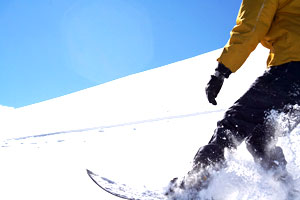 Julien Guy: supernova cosmologistI'm sitting in the airport right now, passing time as I wait for my flight back to SFO. Looking at the clock now, I see that my jet lag future does not bode well. I awoke at 5:00 AM here and nearly 11 hours later feel like the day is over, yet it is only 7:50 AM in CA.
Julien Guy: supernova cosmologistI'm sitting in the airport right now, passing time as I wait for my flight back to SFO. Looking at the clock now, I see that my jet lag future does not bode well. I awoke at 5:00 AM here and nearly 11 hours later feel like the day is over, yet it is only 7:50 AM in CA.
I spent the last week at a conference in the Italian Alps with about 200 skier/cosmologists. Mornings were spent in the conference hall watching 15 or 25 minute presentations. Afternoons were for the slopes. Evenings were back in the conference hall.
The conference started with supernova talks - I was fourth on the list. Being in the field, I had heard most of the results that were presented in the other talks. Ditto the other attendees' perspectives on my talk. However, there were some new and very promising results from the Supernova Factory.
The supernova factory is a LBNL-based research group that focuses on "nearby supernovae". By nearby, I mean only a few hundred million light years away. These supernovae occur in galaxies that are distant enough to be free of the gravity of the Milky Way and our neighboring galaxies but close enough to observe with smaller telescopes.
The supernovae observed by the SN factory are very bright compared to the supernovae I observe with the Hubble Space Telescope. The supernovae are bright enough to make very precise measurements at each wavelength of the supernova spectrum. Just like my earlier post on spectroscopy, the supernova light is imaged after passing through a prism. These images provide very detailed information about the molecules and atoms that are present in the supernova explosion.
